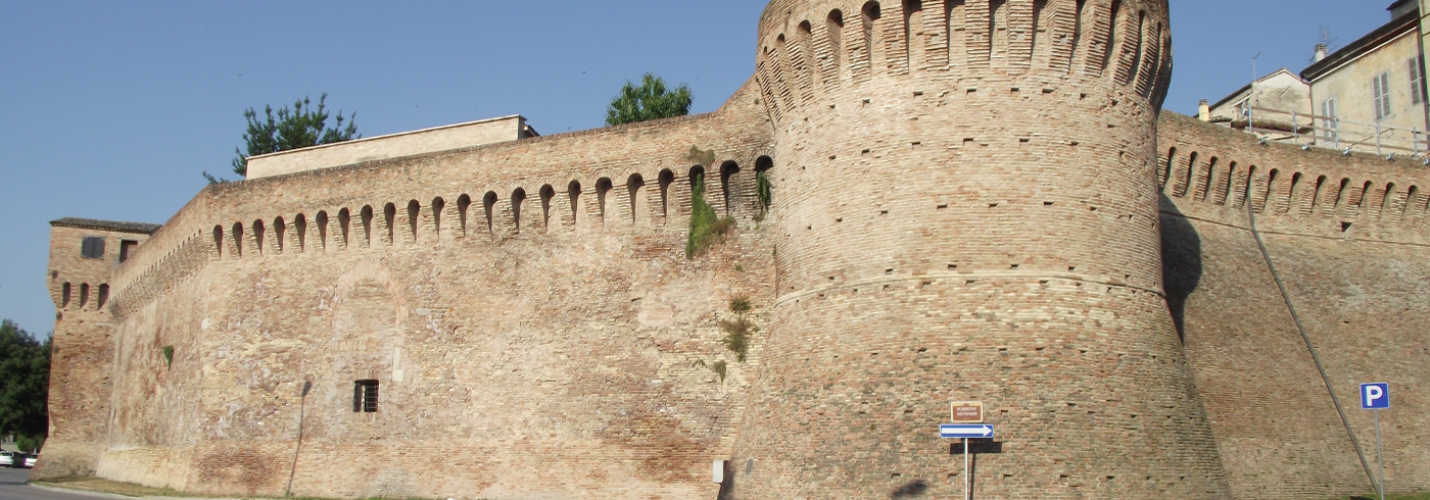
Discover Jesi
Let’s go to the discovery of Jesi, a small town of the Marche region of medieval origin in the province of Ancona, a treasure trove of history, art and culture in the hills, about 30 km from the regional capital of the same name and approximately 20 km from the Adriatic Sea. low valley of the Esino river, Jesi is the most important center of the Vallesina. With about 40,500 inhabitants, it is the third most populous city in the province of Ancona, after Ancona and Senigallia.
Surrounded by a wall of the best preserved in the region, it has won the title of “Unesco City” in 1969 for the preservation of the Roman castrum in the contemporary urban fabric.
A city, therefore, of ancient and important industrial traditions that have earned it, since the late nineteenth century, the nickname of “Milan of the Marche”.
Before listing the wonders that characterize the city, it is necessary to start with a brief historical mention: from a Roman colony in 247 BC, Jesi became famous for the birth Federico II of Swabia in 1194 and for the composer Giovanni Battista Draghi, called Pergolesi, considered still today one of the most important composers of the genre “Opera Buffa”. Two figures that have made Jesi an important cultural and historical center.
To lose oneself in the discovery of Jesi means to lose oneself in a reality rich in art and history, between museums and the library, to be surprised by the strong city walls, or by refined noble palaces without ever feeling the sense of loss lost in the intricate plot of its alleys and squares.
In fact, according to the TripAdvisor tourist review portal, Jesi is among the first regional locations as a tourist resort based on the average rating of hotels, restaurants and activities.
Medieval walls
For every tourist who decides to live a fantastic adventure between past and present, a walk through the historic walls, an ancient defensive wall of the city during the Middle Ages can not be missing.
It is one of the most complete and best preserved of the medieval period and one of the greatest examples of the region. More than 1.5 km long, it contains the medieval center of the city. It is possible to walk along the walls, where you can admire the various doors with all their features, the towers of the most varied shapes and the various loopholes.


Frederick II of Swabia Square
When we talk about Jesi, it is impossible not to name Piazza Federico II, a square that once stood where the Roman Forum was and where tradition has it that Constance d’Atavilla gave birth to the Swabian emperor under a tentail on December 26, 1194. The event is commemorated by a plaque written in several languages, placed on the façade of Palazzo Rapanti, which today houses the Diocesan Museum which collects various works of sacred art.
Starting from Piazza Federico II you can take Via Pergolesi, where in a street on the right you can see a plaque indicating the birthplace of Pergolesi.
Mansion of the "Signoria"
At the beginning of Via Pergolesi we find Palazzo Colocci, where stands the Palazzo della Signoria, recognized as one of the most illustrious public palaces of the Marches. Inside we find the Municipal Library, rich in over 115 thousand volumes and the Civic Museum.


Pergolesi theater
On the other hand, instead, located in Piazza della Repubblica, we find the Teatro Pergolesi, famous for its impeccable acoustics. Even today it is one of the most important theaters for opera performances.
From Piazza della Repubblica the commercial street of the city begins: Corso Matteotti, where you can find shops and activities of any kind, up to the Arco Clementino, a triumphal arch built in 1734 in honor of Pope Clement XII. Walking on the course, for the art lovers, a surprise awaits them: Palazzo Pianetti, home of the Civic Art Gallery which contains inside the Stucchi Gallery and a large group of works by Lorenzo Lotto. Also on Corso Matteotti, you can admire another architectural masterpiece: the Sanctuary of Santa Maria delle Grazie, initially built as a votive chapel after the period of plague that overwhelmed the city in the mid-400s.
Not just art
One thing needs to be clarified: Jesi is not just a city to visit for art lovers.
Over the last few years this beautiful town, immersed in the rolling hills of the Marche region, has experienced a strong expansion, becoming a cosmopolitan urban center full of nighttime activities for anyone looking for leisure until late evening. Its movida, in the last years, has undergone a strong increase, offering entertainment suitable for all ages, whether you want to have a drink with friends or whether you want to dance in a disco until dawn.
If ever you happen to visit Jesi in the month of May, you can not miss the traditional Palio di San Floriano, a medieval re-enactment, with parades of figures, tambourines and archers.
The celebration takes away with the traditional “scampanellata” (sounds of more and more bell rings played by chids) of San Floriano through the streets of the historic center, continuing with the announcement of the herald, concerts of ancient music, court, archery competitions and typical open medieval taverns where you can taste local wines.
In fact, staying in the city of Jesi means getting in touch with an ancient culinary tradition that you can not absolutely miss.
Wine, cheese, oil, cured meats, honey, cheese pizza, are some examples of what the Marche cuisine offers and especially that of Jesolo, all products that will satisfy even the most demanding palates.
The true celebrity, which made Jesi famous all over the world, is certainly its wine production.
We must not forget that we are in the lands of Verdicchio dei Castelli di Jesi, one owes the finest Italian white wines known nationally.
In the area of Jesi and Vallesina, other DOC wines are also produced, such as Lacrima di Morro d’Alba, Rosso Piceno and Visciola wine, a sweet and flavored drink made with a variety of wild cherry. All products that go well to be given to our acquaintances or as a souvenir.


Olympic champions and more
Moreover, Jesi, nationally and internationally, is known and proclaimed European Sports City for the year 2014 by Aces. Fencing, football, athletics, motorcycling … are just some of the sporting activities that have brought prestige to the city, collecting numerous world titles and Olympic gold medals that have made Jesi famous all over the world. The sporting history of Jesi, is absolutely linked to the Club Fencing Jesi, especially in the discipline of the foil, which allows it to be today the city with the most medals in the world in the history of the Olympics with 22 medals.
